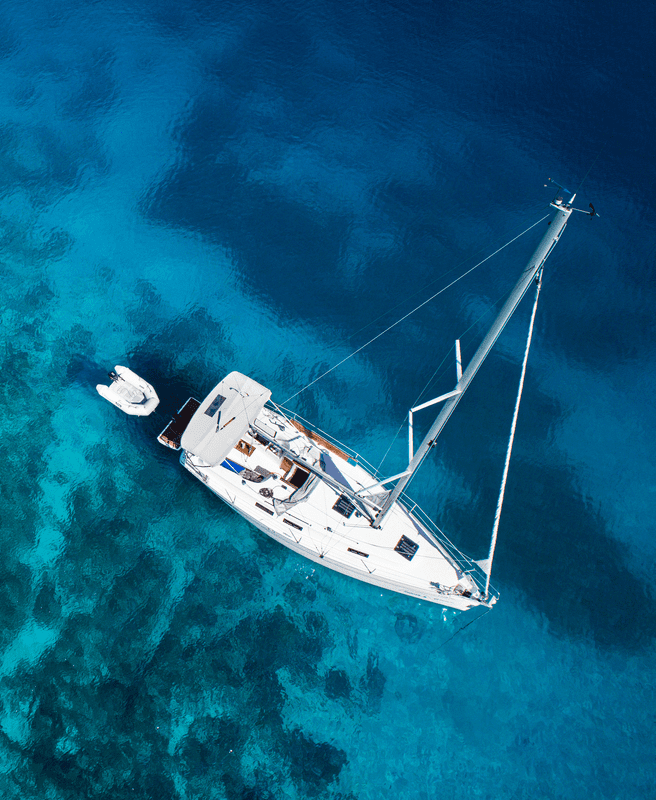Reverse geoarbitrage in frontier markets: how I made a 15X return in one day
July 10, 2023
Dateline: Kuala Lumpur, Malaysia
Granted, the ten-fold return would have to prove scalable to mean much. But you’ll never hear me complaining about turning $5 into $100.
Yes, for the price of a gig on Fiverr, I potentially jumpstarted the next emerging market business opportunity and engaged in what I called “reverse geoarbitrage”.
While In Laos several weeks ago, I wrote about all of the frontier market opportunities available there. In such markets, you could almost throw a dart at a board and come up with a workable, and relatively easy, business idea. For instance, the Shiseido store in Laos’ capital city of Vientiane sold products for as much as three times the price as the same store in Bangkok.
Unlike most similar situations where government taxes and tariffs make up the difference, the huge price disparity in this case was related to the emerging nature of the Laos market. Vientiane’s population more than doubled in just a few short years, and the market is still catching up.
Meanwhile, luxury goods like beauty and skin care products aren’t widely available. The growing middle class make regular trips to Udon Thani, Thailand across the border, or even Bangkok, to buy their luxury goods at more reasonable prices.
The outrageous margins in beauty products make them among the most competitive businesses on earth; a business I wouldn’t touch in the developed world. But in a frontier market like Laos, several businesswomen I met with suggested there could be an opportunity to bring in products on demand, saving consumers a trip and earning a decent profit in the process.
On top of that, consumers in Laos (and even Thailand) felt somewhat slighted that western brands like Victoria’s Secret only imported their lower-end products to sell abroad.
So I decided to run a test. While I’m not an entirely online entrepreneur, I had my web guy set up a quick landing page and shopping cart, and turned to Facebook to do a little market research.
The mission: find out whether southeast Asian consumers, including those in Laos, would buy beauty products and clothing from overseas for delivery in their local market.

You see, we frequently discuss the concept of geoarbitrage as a way to benefit from selling goods and services to businesses or consumers in developed markets like the United States, while living in and running a business from a cheaper part of the world such as southeast Asia.
It’s a simple concept: be the face of a western-friendly business, charge western prices, and have foreigners do the work for ten cents on the dollar. All while you sip mojitos on the beach outside your $400 a month apartment.
But my test was a bit different. I realized that buying advertising on Facebook can get a bit expensive when targeting US consumers. After all, most businesses on Facebook are targeting those same US consumers.
For instance, we recently ran a test to send traffic to our Passport to Freedom event page, and paid about $0.20 per link click. We’ve done better than that before, but when you’re hyper-targeting a market, it can be more expensive.
On the other hand, traffic in southeast Asia can be dirt cheap. While the population of Laos is quite small, you’ve got tens of millions of active, young consumers eager to spend in countries like Vietnam, the Philippines, and Thailand. Some websites practically give this traffic away to advertisers.
My “reverse geoarbitrage” test proved this to be the case. While there isn’t nearly enough traffic from Laos to establish any proof of concept (and nor did the little traffic that did exist convert), Facebook’s ad serving system determined that people in Vietnam were the most interested in my offer based on their click-through rate.
Showing photos of American beauty and clothing products yielded click-through rates as high as 14% even after thousands of impressions.
And my cost to get those website clicks was nowhere near the $0.20 per click I paid in the United States. My most successful ad variation out of nearly eighty of them garnered 81 link clicks to my website at a cost of $0.83 – about one cent per link click, or 95% cheaper than my US traffic.
I believe that considering my click-through rate, that cost is still a bit high. I’ve seen link clicks as cheap as a half-cent in emerging markets like Vietnam, and even a bit less in markets like Pakistan where you’d have trouble selling anything.
However, paying $1 to get 100 people interested in your product doesn’t seem too bad.
The results, while not conclusive, were interesting: 248 visitors to my ugly (and slightly confusing) sales page brought five sales at $20 each. I ran an exit survey to see why non-buyers didn’t convert, and most said that while they would pay extra for American brands or American-style products, they weren’t used to paying that much for such a product. To them, the products in question were more of a commodity they could only dream of paying top dollar for.
However, my 15-minute lead time on my test website converted one in about fifty visitors for a $20 product about a quarter of the audience said they typically spend $10 or less for. My total investment to generate that traffic was $5, which included Facebook ramping up my campaign at the end of the day and botching the lower per-click costs I got earlier in the day.
Still, let’s do the math on this “reverse geoarbitrage”:
1. I made gross sales of $100, exclusive of shipping which I charged at an estimated break-even rate. If I chose to use a staff courier to deliver the products, I could get the cost lower over timewith enough scale.
2. Using a super-easy-to-set-up third party payment processor, my credit card fees were about $5.
3. If I chose to fulfill the orders, my wholesale cost would be about $12 plus a few bucks for shipping (lower, of course, with any kind of scale).
That means that even on a tiny test segment and overpaying for merchant and shipping solutions, I netted about $75 – fifteen times my $5 investment. I’m rich.
Of course, five orders does not a business make. However, I have some level of confidence things could be scaled to a certain extent. I’d have to expand the product offerings, which would create a more complex supply chain, but it could be done.
Unfortunately, Laos proved too small to get any traction. One contact I made there suggested the market was 2-3 years away from really considering anything like this, and you’d still need some kind of on-the-ground presence to take orders and facilitate product. (The good news is storefronts are cheap and labor is cheaper there)
Considering that even Vietnam isn’t anywhere close to the peak of e-commerce acceptance, I’d say there’s potential to use my reverse geoarbitrage system to sell western products – at western prices – to people in markets that can’t access them… all while paying deeply discounted customer acquisition rates.
Over time, of course, the price to reach consumers in countries like Vietnam will increase as more international brands seek not only to market direct-to-consumer, but also to build their brands online. Such is the nature of the emerging and frontier market.
For now, however, my small overnight test is more encouragement that even the seemingly smallest of consumer needs can be solved by a small-time entrepreneur willing to invest their time in a frontier market.


Private Jet Ownership for Investors and Global Entrepreneurs
Private aviation is no longer just about luxury. For high-level investors, entrepreneurs, and global citizens, it’s an essential tool for mobility, privacy, and control. Owning a private jet goes far beyond flying in comfort. It means bypassing commercial delays, maintaining tight schedules across different jurisdictions, and gaining strategic access to offshore opportunities, second residences, and […]
Read more

Why Singapore’s Startup Hub is the Best in Asia
Once entrepreneurs hit their stride, many set their sights on relocating to a global startup hub that offers business-friendly policies, world-class infrastructure and access to international markets. Some wait until their ventures gain momentum, while others move early, incorporating as soon as a profitable idea takes shape. Enter Singapore – a sleek, future-ready city-state that’s […]
Read more

Which Country is Best for Startups in Asia?
Asia isn’t just rising – it’s redefining where and how global business gets done. With world-beating adoption, cost-effective talent and rapidly growing consumer markets, the region offers serious upside for entrepreneurs looking to start, build or scale. But with opportunity comes complexity. In fact, the region has so many options it can be daunting to […]
Read more




